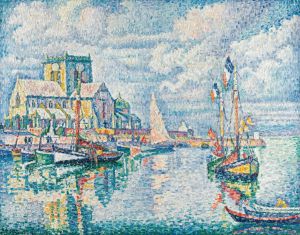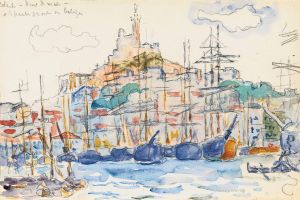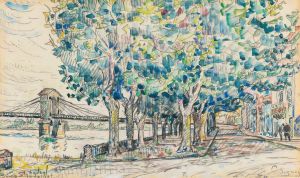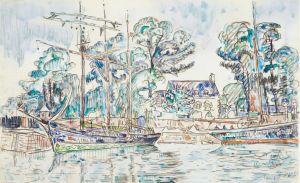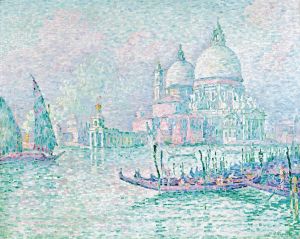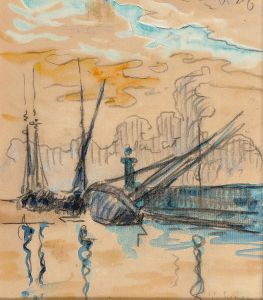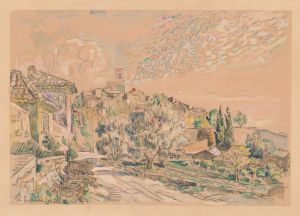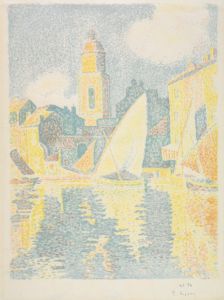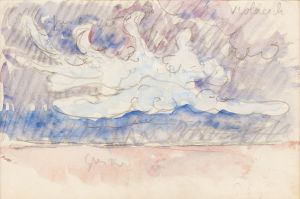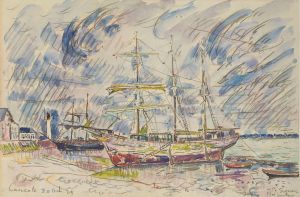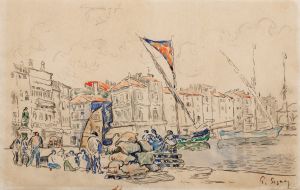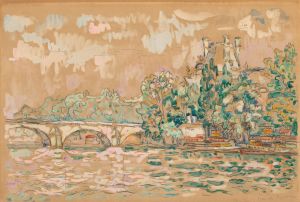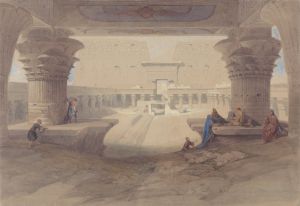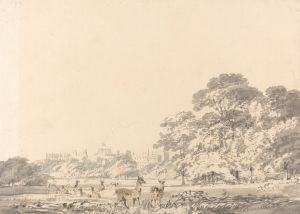
Petit Andély, Château Gaillard
A hand-painted replica of Paul Signac’s masterpiece Petit Andély, Château Gaillard, meticulously crafted by professional artists to capture the true essence of the original. Each piece is created with museum-quality canvas and rare mineral pigments, carefully painted by experienced artists with delicate brushstrokes and rich, layered colors to perfectly recreate the texture of the original artwork. Unlike machine-printed reproductions, this hand-painted version brings the painting to life, infused with the artist’s emotions and skill in every stroke. Whether for personal collection or home decoration, it instantly elevates the artistic atmosphere of any space.
Paul Signac's painting "Petit Andély, Château Gaillard" is a notable work that exemplifies the artist's commitment to the Neo-Impressionist movement, particularly the technique known as Pointillism. Signac, a French painter born in 1863, was a leading figure in this movement, which sought to apply scientific principles to the use of color and light in art.
The painting depicts Château Gaillard, a historic castle located in Les Andelys, Normandy, France. This castle was built in the late 12th century by Richard the Lionheart, King of England and Duke of Normandy. Château Gaillard is perched on a cliff overlooking the Seine River, and its strategic location made it a significant military stronghold during the medieval period. The ruins of the castle have long been a source of inspiration for artists due to their dramatic setting and historical significance.
Signac's depiction of Château Gaillard is characterized by his use of Pointillism, a technique developed alongside Georges Seurat. This method involves applying small, distinct dots of color to the canvas, which blend in the viewer's eye to create a luminous effect. Signac was particularly interested in the interplay of light and color, and his works often feature vibrant, contrasting hues that capture the essence of the scene.
In "Petit Andély, Château Gaillard," Signac captures the castle and its surroundings with a vivid palette that highlights the natural beauty of the landscape. The painting reflects Signac's interest in capturing the effects of light on water and stone, a common theme in his work. The use of Pointillism allows Signac to convey the shimmering quality of the light as it interacts with the Seine River and the ancient stones of the castle.
Signac's work is often associated with the broader Post-Impressionist movement, which sought to build on the innovations of Impressionism while exploring new techniques and ideas. His commitment to Pointillism and his exploration of color theory had a significant influence on later artists, including Henri Matisse and the Fauves, who were inspired by his bold use of color and innovative techniques.
"Petit Andély, Château Gaillard" is a testament to Signac's skill as a painter and his dedication to the Neo-Impressionist movement. The painting not only captures the historical and architectural significance of Château Gaillard but also exemplifies the artist's ability to convey the beauty and complexity of the natural world through his unique approach to color and form. Signac's work continues to be celebrated for its contribution to the development of modern art and its enduring appeal to audiences around the world.





